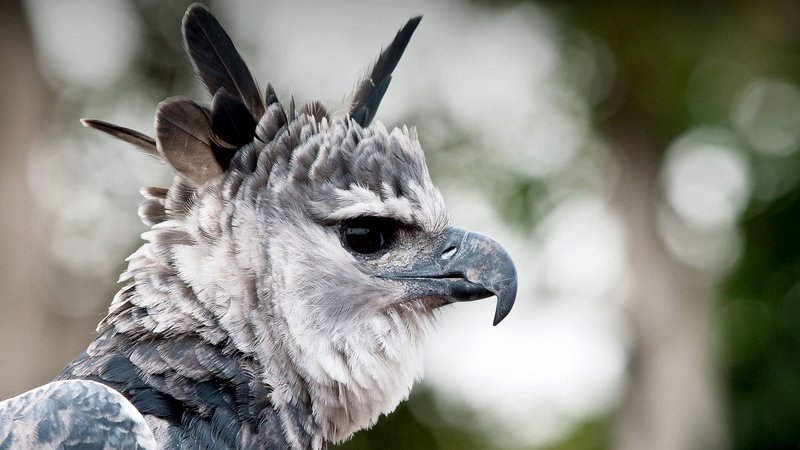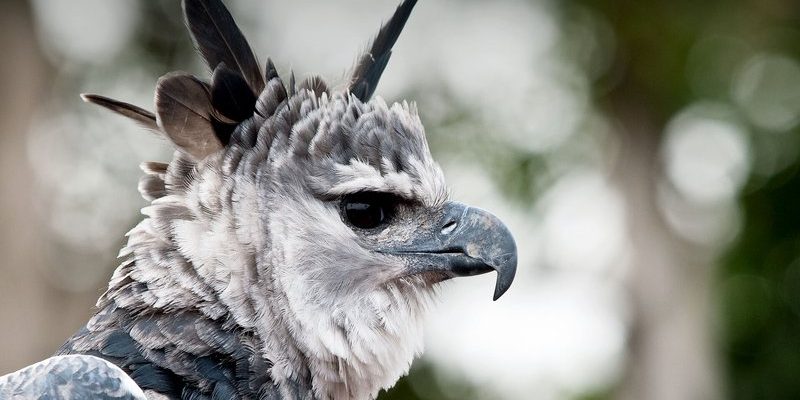
You might not know this, but these magnificent birds are among the largest and most powerful eagles in the world. Weighing up to 20 pounds and boasting a wingspan of over 6 feet, they’re quite the sight to behold. They primarily inhabit the lush rainforests of Central and South America, where they reign as apex predators. Let’s dive into this fascinating bird and explore 10 things you might not know about the Harpy Eagle.
1. The Harpy Eagle’s Size is Impressive
The first thing that strikes you about the Harpy Eagle is its size. Imagine a bird that can almost rival a small dog! Weighing between 6 to 10 kilograms (or about 13 to 22 pounds) and stretching up to 2 meters (around 6.5 feet) from wingtip to wingtip, the Harpy Eagle is no ordinary bird. It’s the second-largest eagle in the world by wingspan, surpassed only by the Andean Condor.
But it’s not just about wingspan; the Harpy Eagle is also known for its stout build. Its powerful legs and talons are designed for gripping its prey, which often includes sloths and monkeys. Imagine having a grip that can crush bone! That’s the kind of strength this bird possesses.
2. Their Diet is Unusual
Here’s the thing: when you think of eagles, you might picture them swooping down on fish by a river. The Harpy Eagle, however, has a more specialized diet. They predominantly feast on tree-dwelling animals—yep, that includes sloths and various types of monkeys.
Their hunting technique is fascinating. They perch high above the forest, scanning the treetops for movement. When they spot potential prey, they make a swift dive, using their powerful talons to catch the unsuspecting animal. This predatory method not only showcases their speed but also their incredible strength. You might be wondering how they manage to carry such heavy prey; their strong legs help them lift and maneuver these hefty meals back to their nests.
3. Their Nesting Habits Are Unique
Have you ever seen a bird’s nest built like a fortress? The Harpy Eagle takes nest-building to another level. They build large, sturdy nests, often using branches that can weigh over 1,000 pounds! Located high in tall trees, these nests are typically reused for many years.
What’s more, a pair of Harpy Eagles will often return to the same nest year after year. This commitment to nesting is a crucial part of their breeding. The female usually lays one to two eggs once every two to three years, which means they invest a lot of time raising their young. During this period, the male is responsible for bringing food, ensuring that the female and chicks are well-fed.
4. Harpy Eagles Have a Distinct Appearance
If you ever see a Harpy Eagle, you won’t soon forget it. They have unique features that set them apart from other birds of prey. Their large, hooked beaks are perfect for tearing into flesh, while their striking feathered crests give them a regal appearance.
Their plumage is primarily dark gray with white patches, making them blend beautifully with the trees and shadows of the rainforest. This camouflage is essential for hunting, as it allows them to remain hidden while they stalk their prey. Honestly, seeing one in the wild is like spotting a rare gem—you can’t help but be captivated by its beauty.
5. They’re Expert Climbers
While most eagles are known for their soaring abilities, the Harpy Eagle is also an extraordinary climber. They’re equipped with strong talons and powerful legs, allowing them to navigate through dense treetops effortlessly. This skill is essential for both hunting and nesting.
When they hunt, they often have to maneuver through thick foliage to reach their prey. Their climbing ability means they can hunt species that are well-protected in the treetops. Talk about an impressive skill set!
6. They’re Found in Very Specific Habitats
Harpy Eagles are particular about where they call home. These magnificent birds thrive in tropical rainforests, where they find both shelter and ample food. You won’t find them just anywhere; they prefer forests with a high canopy, rich in biodiversity.
Sadly, as beautiful as their habitat may be, it’s also at risk. Deforestation and habitat loss are significant threats to their populations. Without the dense forests they rely on, Harpy Eagles struggle to find food and safe nesting sites.
7. They’re Great Parents
Parenting is a big deal for Harpy Eagles. Once the eggs hatch, both parents take on roles to raise their young. The female stays close to the nest, while the male hunts and brings food. It’s a true partnership that ensures the chicks get the care they need to grow strong.
Interestingly, after the chicks fledge—meaning they learn to fly—they often remain dependent on their parents for several months. This extended care allows them to hone their hunting skills before they venture out on their own. It’s a great example of teamwork in the animal kingdom.
8. They Have a Limited Range
You might be surprised to learn that the Harpy Eagle has a relatively restricted range. They are primarily found in Central and South America, from southern Mexico down to northern Argentina. This limited range means that conservation efforts are crucial to protect their habitats.
In some areas, Harpy Eagles are considered endangered or vulnerable due to habitat loss and hunting. Conservationists are working hard to raise awareness and protect these incredible birds. After all, they play a vital role in their ecosystems as top predators.
9. Their Calls Are Distinctive
If you ever hear a Harpy Eagle’s call, you won’t mistake it for anything else. Their vocalizations are unique, often described as a series of loud, high-pitched whistles. These calls serve various purposes: they help establish territory, communicate with mates, and keep in touch with their chicks.
The sounds carry through the dense forest, allowing eagles to communicate even when they’re out of sight. It’s fascinating how sound plays such an essential role in their lives, connecting them to their surroundings and each other.
10. They’re Symbols of Strength and Power
Throughout history, the Harpy Eagle has been a symbol of power and strength in various cultures. In some indigenous communities, they are considered sacred animals, believed to have spiritual significance. Their image has been used in art, mythology, and even as national symbols.
This symbolism comes from their impressive hunting skills, fierce appearance, and ability to thrive in challenging environments. It’s easy to see why so many admire this magnificent bird. The Harpy Eagle reminds us of nature’s power and beauty—something worth protecting.
As we wrap up our journey through the world of the Harpy Eagle, it’s clear that these birds are more than just impressive creatures. They symbolize strength, resilience, and the delicate balance of nature. The next time you hear about these majestic eagles, remember the incredible traits and challenges they face—because they truly are remarkable beings that deserve our respect and protection.

